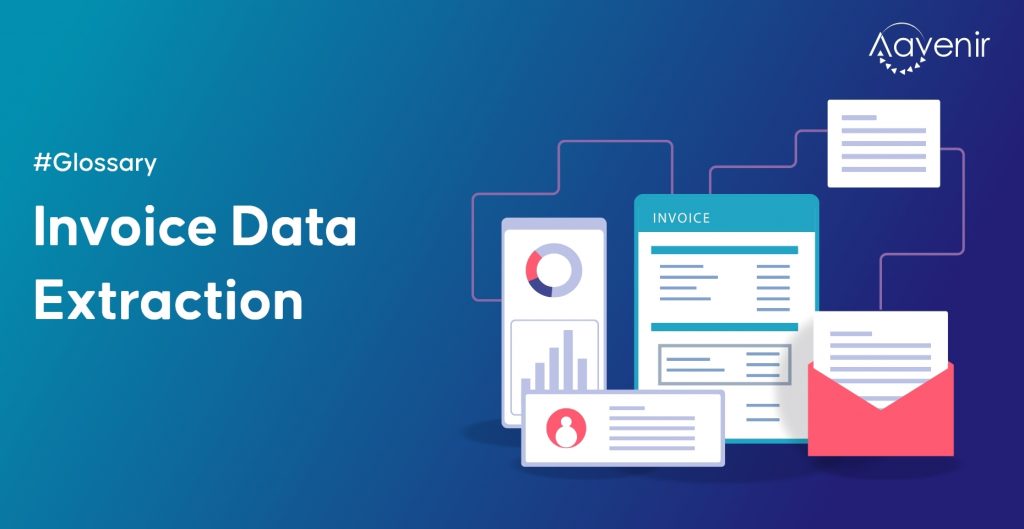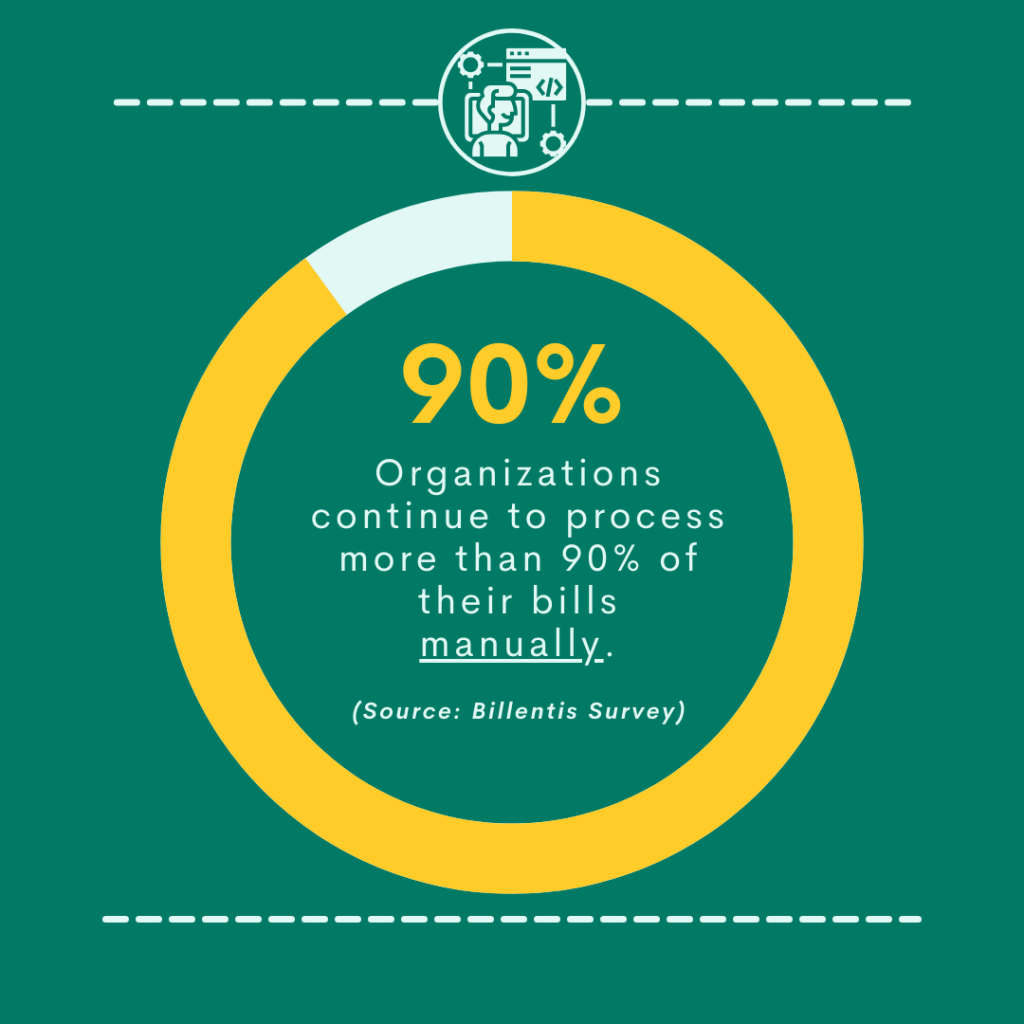What is Invoice Data Extraction?

Invoice data extraction and processing, a critical function of any company's Accounts Payable department is the process of extracting relevant data from invoices such as invoice number, supplier name, address, amount, etc.; validating the extracted data, uploading it to an ERP software, determining a match (against receipts and POs), and finally initiating payments.
A systematic invoice data extraction also known as Invoice data capture eliminates backlog and transaction errors, allowing you to close the books smoothly. Invoice data capture is the process of entering invoice information into an accounting system which can be as simple as a paper ledger that keeps track of outgoing payments, suppliers who received them, and payment dates. That would suffice for a small business, but imagine the turmoil such a system would cause in a major global organization.
Paper trails are and will always be necessary for transparency in reporting and auditing; thankfully, we no longer need to use the term "paper" literally in this regard. Instead, AP teams can now leverage invoice data extraction methods offering safe, dependable, and cost-effective digital paper trails.
However, even though automated solutions are readily available, several of these methods still involve a significant amount of manual work. Let’s dig through the challenges.
Challenges in Invoice Data Extraction
Invoices are frequently handled in various formats/layouts across businesses, including hard copy, email attachments, and electronic data interchange (EDI). Processing invoices in these many formats can be time-consuming and labor-intensive. This frequently results in errors and delays in document processing.

When invoice administration is done manually, significant delays occur in invoice processing. According to a recent poll, approximately 45 percent of bills take a week or longer to process when five or more persons must review and approve the invoice.
Common Challenges in Traditional Invoice Processing
- Difficulty in managing suppliers beyond a specific scale
- Payment delays brought on by the laborious vendor matching procedure
- Poor communication between suppliers and vendors
- An excessive amount of email and paper necessitates storing and organizing physical files
- Communication gaps and issues between departments
- The possibility of payment errors
- Lack of visibility: Paper-based invoice management makes it difficult to share invoice information with colleagues inside or from other departments
- Poor scalability: With the growth in scale of operations, manual management of invoices becomes difficult, if not impossible.
Evolution of Invoice Data Extraction Methods
There are three methods for collecting data from invoices: manual data entry, template-based OCR, and AI-enabled automated OCR solutions. All of these methods have their use cases, yet improvements in technological solutions and the evolution of AP best practices are leaving some methods obsolete.
Manual Data Entry
- Get a paper invoice
- Open accounting software
- Examine the paper invoice
- In accounting software, enter the PO number in the header field for PO number
- In accounting software, enter the vendor name in the header field for vendor name
- Examine the paper invoice
And so on…
So, you get the picture. You could substitute "paper invoice" for "pdf invoice," with the difference being that the data entry clerk copies and pastes invoice details into accounting software rather than typing them.
Manual data entry is clearly time-consuming and draining, irrespective of whether your organization outsources or keeps it in-house. But, as dramatic as that sounds, it's true. The fact remains that the process of manually extracting invoice data can cause a wide range of issues, including late payments, missed early payment discounts, and vendor friction.
OCR (Optical Character Recognition)
With the introduction of OCR came the hope of significant reductions in the number of man-hours spent on extracting invoice data. In addition, OCR solutions scan printed or read electronic documents to extract text from them. In addition, AP professionals use this solution to extract invoice data, which they then process and store.
There are two types of OCR: template-based and automated. The former needs manual effort to maintain and prevent errors, whereas the latter allows for the operation of an accurate and efficient touchless AP process.
Template-Based OCR
In this data capture method, an invoice is read by OCR software, which then records the data following predetermined rules and templates. In its decades-long history as the preferred option for processing digital invoices, it has come a long way.
As long as the software reads characters in layouts it has been trained to understand, template-based OCR extracts data accurately. This implies that your AP coworkers must establish templates and guidelines for each type of invoice they receive.
This is a feasible solution if your company requires all of its suppliers to submit invoices in the same format. However, it's more likely that the invoices your company's AP unit is processing are formatted differently. Additionally, at least one employee must be in charge of tasks like accuracy checking, PO matching, and starting the approval and payment processes.
Smart OCR Invoice Scanning
A smart OCR invoice scanning platform, also known as cognitive invoice data capture software, is aware of the data it extracts. With continued use, the software gains the ability to recognize and capture pertinent data in various document layouts using machine learning technology. As a result, the AP team will no longer need to manually set up new templates whenever new invoice layouts are received.
How about setting up a smart OCR invoice scanning solution for complete automation of AP data entry? If your company is okay with having software-approved invoices, you could even go so far as to design a completely touchless AP process. However, you will always need human intervention to monitor accuracy and ensure that every step is a smooth ride.
While a cloud-based SaaS solution for automated invoice data capture may seem like a noticeable improvement for AP, finance professionals are understandably apprehensive about cutting-edge technologies like AI and machine learning. If you're determined to integrate cognitive data extraction into your company's AP workflow, you might have to work harder to win the support of the decision-makers.
Final Thoughts
Consider your company's AP process when deciding which areas of your business could benefit from an upgrade. For example, you may discover ways to enhance productivity and minimize costs across departments by improving invoice processing. Spend some time researching AI-enabled accounts payable automation tools as one of the technological solutions that can assist you in accomplishing this. A smart OCR invoice scanning platform that automates accounts payable data entry could be critical in helping your company in meeting its strategic goals.


